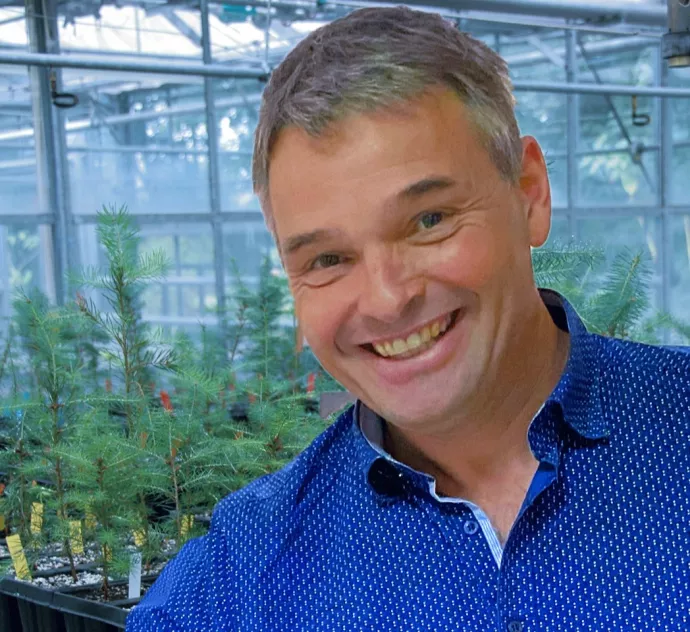
Nature Plants' Perspective Illuminates View of Plant Function
21 researchers from all over the world met for a three day workshop on February 2019 at the University of Helsinki. The product of this summit is a perspective paper published this month by the prestigious Naturec Plants. Molecular Biologists, Plant Physiologists, Remote Sensing Specialists, Physicists, Ecosystem Modellers, these 21 co-authors are representing different areas of research, and each contributed with a different perspective and view to this paper. This perspective paper describes the past and present use of the technology and its potential for future applications in agriculture, forestry, ecosystems and global change modelling, as we get hold of the next generation of chlorophyll fluorescence sensors that can observe global vegetation 24/7 throughout the year.
One of these 21 co-authors is Prof. Ingo Ensminger, from Biology, University of Toronto Mississauga. He collaborated with some of the authors for many years.
Prof. Ensminger used chlorophyll fluorescence measurements to assess plant function and health for almost 25 years. His lab has been using this approach to assess photosynthesis and how environmental conditions alter the efficiency of carbon assimilation. They have used Chlorophyll fluorescence to understand the impact of highlight stress, drought stress, water stress, toxicity of heavy metals on plants. But all these years we were limited to measuring single cells or single leaves. The newly developed SIF sensors allow to study all these questions at much larger scale, the ecosystem and even global scale, and this will result in new research approaches and collaborations of researchers from multiple areas of research.
Chlorophyll fluorescence, the light from photosynthesis, illuminates our view of plant function
Observing the uptake of atmospheric carbon dioxide by an entire forest via photosynthesis, identifying crops that are resistant to drought stress and global change – Measuring chlorophyll fluorescence is a powerful tool that can help assess plant function and fitness from single cells to global scale.
Chlorophyll, the green pigment found in plants and algae, emits faint red and far-red light when illuminated during photosynthesis. This so called chlorophyll-a fluorescence conveys information about the instantaneous rate of photosynthesis, which provides an “optical window” that tracks plant functional and health status.
Methods for measuring chlorophyll-a fluorescence at the leaf and subcellular levels have been around for many years, as Ingo Ensminger explains, one of the co-authors of a new paper published in Nature Plants. “Throughout my entire career we have used the fluorescence signal to understand how plants use light energy efficiently and under environmental stress. Similar to the human heart beat, the signal that we retrieve from chlorophyll-fluorescence measurements is a sensitive and highly useful indicator for the health status of a plant.”
It is only recently that chlorophyll fluorescence (known as solar-induced fluorescence, SIF) can be estimated and imaged at the ecosystem and regional scales. As Albert Porcar-Castell from the University of Helsinki and lead author of the paper explains: “Cutting edge SIF measurements can now be conducted with hyperspectral optical sensors mounted on tall towers, drones, aircraft, and even satellites. An exciting example is the FLuorescence EXplorer (FLEX) satellite mission from the European Space Agency, which is scheduled for launch in 2024.” This system will provide global maps of chlorophyll-a fluorescence at a resolution of a few hundred meters on a global scale and enable scientists to monitor vegetation health and productivity continuously on a global scale.
These developments pave the way to multiple scientific and commercial applications in plant ecophysiology, ecology, biogeochemistry, as well as precision agriculture and forestry.
"Excitingly, SIF opens up spatial and 3D photosynthesis studies in the field. This will help to resolve long standing research questions related to the photosynthetic dynamics of the different parts of a plant or ecosystem in real world conditions. SIF can also be applied in physiological phenotyping and pre-visual stress detection, which is a powerful tool for next-generation forest and crop management practices," says Albert Porcar-Castell from the University of Helsinki.
To meet these ambitious goals, multiscale and multidisciplinary collaborative studies are required. Expertise from plant biology, remote sensing, agronomy and forestry should be fused to translate the information content of SIF into innovative applications capitalising on insight across the molecular, leaf and canopy scales.
Article:
Albert Porcar-Castell , Zbyněk Malenovský, Troy Magney, Shari Van Wittenberghe, Beatriz Fernández-Marín, Fabienne Maignan, Yongguang Zhang, Kadmiel Maseyk, Jon Atherton, Loren P. Albert, Thomas Matthew Robson , Feng Zhao, Jose-Ignacio Garcia-Plazaola , Ingo Ensminger , Paulina A. Rajewicz, Steffen Grebe, Mikko Tikkanen, James R. Kellner, Janne A. Ihalainen , Uwe Rascher and Barry Logan. Chlorophyll-a fluorescence illuminates a path connecting plant molecular biology to Earth-system science. https://doi.org/10.1038/s41477-021-00980-4
